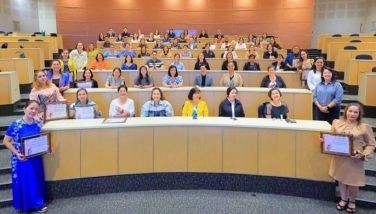Trying to design better vaccines
Part 1
There is a saying that is attributed to the German philosopher, Friedrich Wilhelm Nietzsche (1844–1900):
“Was mich nicht umbringt, macht mich staerker.†(What does not destroy me, makes me stronger.)
It’s true!
If you have had smallpox, you are immune to smallpox (you will not get smallpox again). If you have had chickenpox, you will not get chickenpox again (but see below). If you have survived an illness that is caused by a germ, your body would have developed a defense (immunity, i.e., an effective immune response) against that germ. Immunity comes in the form of molecules, for example, antibodies that bind to the germ and “neutralize†it (make it incapable of doing harm), and immune cells that kill the germ outright.
But, not always!
If you have had chickenpox, the chickenpox germ hides in nerve endings where your immune system cannot reach it. When your immune system becomes weak (from disease or old age) the chickenpox germ emerges from hiding and causes a painful condition called shingles.
Worse, some germs, especially viruses that have RNA (ribonucleic acid) as their genetic material), mutate and change their “appearance†every so often, so that our immune system can’t recognize them anymore. This is the reason we could get the flu every year (so we need to be vaccinated against the flu every year). And this is the reason we often suffer from the common cold.
Can we develop vaccines that will prevent recurrence of illness caused by those continually mutating germs? First, let us examine how vaccines work.
Our immune system has memory. And immune memory can be very long. For example, individuals who had survived the 1918 flu (unfairly called “Spanish flu†even though the first reported cases were in the US and was already found widely in northern Europe before it reached Spain) have been found to have antibodies against the 1918 flu virus even when already in their 90s. Also, individuals who had been vaccinated against smallpox were found to have antibodies to the smallpox virus more than 50 years later.
Vaccination, which tries to mimic an actual invasion of a particular germ, seeks to produce antibodies (and memory immune cells) against that germ. Vaccines come in various forms. Let us consider the types which are commonly used against viruses.
The first is with live, attenuated virus. This is the type that mimics an actual invasion by the virus the closest. The vaccine contains live viruses, but they are weakened and do not pose much of a threat. The virus has the capacity to invade human cells, but in making the vaccine, the virus could first be grown in some other medium, for example, eggs. Soon, the virus adapts to the new medium and grows well in it. But, in so doing, the virus loses its ability to grow well in human cells. In that state, the live, but weakened virus is safe to use as a vaccine. (The danger, of course, is if the virus reverts and regains its ability to grow well in human cells and thus becomes a danger to the human host again. It happens.)
The second commonly used type of vaccine is the inactivated (dead) virus (usually killed by, for example, heat, or acid treatment), which cannot do any harm. However, the treatment changes the structure of its antigens (the molecules to which our immune system reacts against), so that, when confronted with the real virus, the antibodies that had been produced against the dead virus may not recognize the antigens (an antigen is any substance that is foreign to our body) of the live virus. But, there might be enough of the original antigen structures left and antibodies against those structures would be protective, although not fully, against the live virus. (The trend now is to first vaccinate with dead virus to produce enough immunity and then vaccinate with live, but weakened virus, to produce full immunity. This could guard against the possibility that the virus might revert to its old virulent self.)
The third type is the subunit vaccine which contains only a few (or just one) of the antigens. (The vaccine that is used against hepatitis B is a sub-unit vaccine.)
The fourth type is not made of the whole antigen, but only a fragment of it, for example, a peptide from a protein antigen.
There are also attempts to develop DNA vaccines; that is, a DNA segment that codes for an antigen, or part of it, is injected into the host and antibodies and immune cells are produced against the resulting polypeptide. This is still in the experimental stage.
To make the vaccine more effective, adjuvants (molecules that enhance the immune response) are used.
A form of vaccine that holds great promise is the use of viruses which had been modified, so that, for example, the genes that they use to replicate themselves have been removed rendering them no longer capable of causing serious disease. This also is still in the experimental stage.
(To be continued)
* * *
Eduardo A. Padlan was a research physicist at the US National Institutes of Health until his retirement in 2000. He is currently serving as an adjunct professor in the Marine Science Institute, University of the Philippines Diliman, and is a corresponding member of the NAST. He may be contacted at [email protected].
- Latest

























